
The Next Trillion Dollar Wave - AI Narrative in Crypto: Who Are the Top Players?
Dec 12, 2024 21:40
While memes are currently dominating the market and the AI sector takes a brief pause, crypto AI projects are still ones to watch, especially with Nvidia’s booming performance and more AI industry events on the horizon for the latter half of the year.
A new trend is gaining traction—the combination of zkML (zero-knowledge machine learning) with AI agents. zkML ensures privacy and security while verifying the accuracy of AI computations, while AI agents use smart contracts and decentralized networks to automate tasks and decision-making.
Some established crypto projects are adapting to this trend, shifting their focus to capitalize on the new cycle's potential.
Allora Network is one of such projects.
Yesterday, Allora officially unveiled its latest technical whitepaper, rebranding itself as a "self-improving decentralized AI network," aligning with the current hot topics in the industry.
In addition, the project announced a points reward program in May, making it an attractive prospect for both yield farmers and alpha hunters.
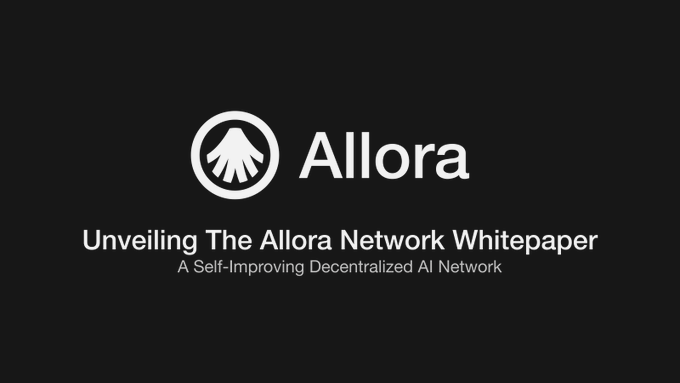
In a field as crowded as AI, what unique features does Allora bring to the table? Considering the complexity of their technical whitepaper, we’ve analyzed and broken it down to highlight the key value points and provide a simple project overview.
According to the Allora whitepaper, the project addresses a longstanding issue in the AI sector: the concentration of computational power, algorithms, and data in the hands of a few major players. This monopolization hampers machine learning (ML) from reaching its full potential.
Allora believes that the key to building optimal machine intelligence is maximizing the number of connections within a network. This approach allows various datasets and algorithms to freely combine, generating the most relevant insights.
To achieve this, we need a form of collective intelligence that can connect vast amounts of data and inference algorithms.
Simply put, the collaboration between different models in existing crypto AI projects is inadequate, and the incentive mechanisms are flawed. Models are often either isolated or not well-connected, leading to subpar inference results.
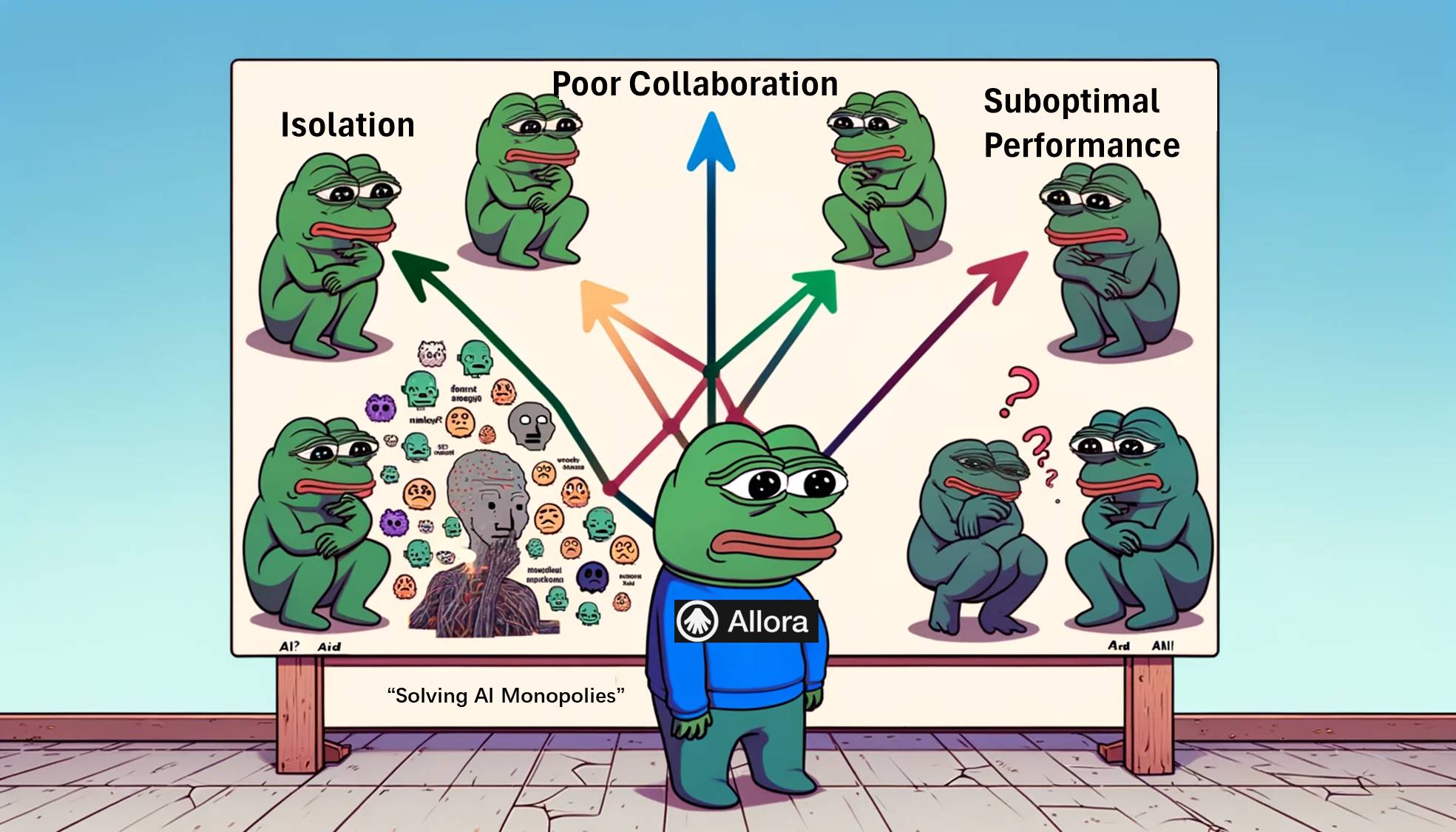
Vitalik Buterin previously mentioned the need for a higher-level mechanism to evaluate different AIs, allowing AI to participate as players.
Allora's goal is to create a decentralized AI network where nodes collaborate more effectively through better incentive structures. They also aim to introduce more intelligent ways to recognize contextual details, enhancing machine learning models for more efficient intelligent reasoning and judgment.
So, how does Allora achieve a more effective decentralized AI network?
The key highlights are context-awareness and a differentiated incentive structure. These innovations enable the network to provide optimal inference results in any environment while fairly rewarding each participant's unique contributions.
Let's break down these somewhat abstract concepts by looking at the participants in the Allora network:
Workers: Provide AI inference results and predict the loss values of other workers' inference results.
Reputers: Evaluate the quality of the inference results provided by workers and the predicted loss values.
Consumers: Request inference results from the network and pay for the service.
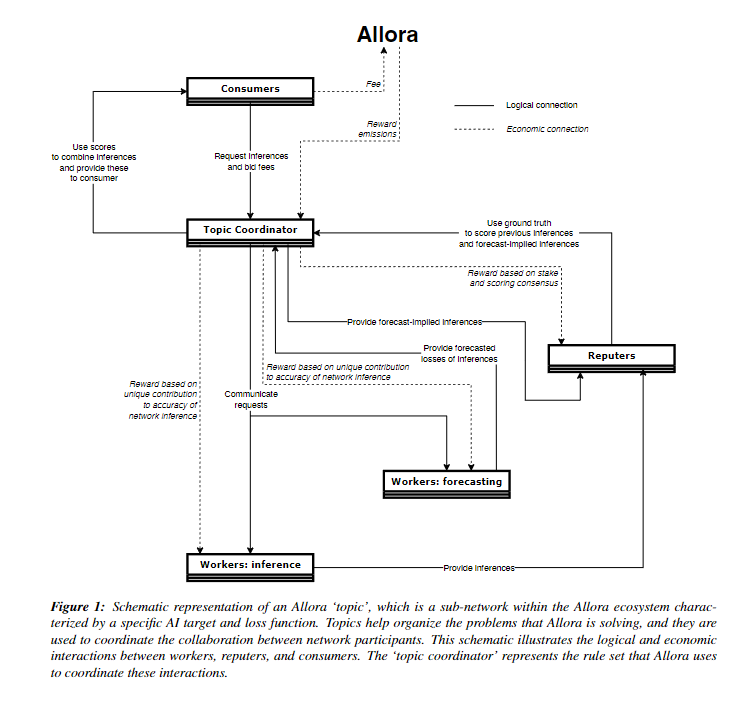
As shown in the diagram, the three main participants in the Allora network interact through a Topic Coordinator:
Consumers: Request inference results from the network and pay for these results.
Workers: Provide inference results and predict the loss values of other workers' inference results. The coordinator synthesizes this information to generate more accurate inference results.
Reputers: Use real data to evaluate the inference results and predicted loss values provided by workers, ensuring fairness in evaluation. They earn rewards based on their consensus with other reputers.
This design, with its three roles, creates an efficient decentralized machine intelligence network that optimizes resource use and improves inference accuracy. Essentially, it’s a system designed for self-improvement and fair rewards through role specialization and incentive mechanisms.
Understanding these roles makes it easier to grasp Allora's context-awareness and differentiated incentive design.
Allora's inference synthesis mechanism is key to achieving decentralized machine intelligence. It works through the following steps:
Inference Task: Each worker generates inference results using their dataset and model.
Forecasting Task: Each worker predicts the loss values of other workers' inference results. These predicted loss values represent the worker's expected performance under current conditions.
Context-Aware Inference: The network uses the predicted loss values provided by workers to generate a context-aware inference result through weighted averaging. This weighted average considers historical and context-dependent accuracy.
Network Inference: The final network inference result is generated by combining the workers' inference results with the context-aware inference result.
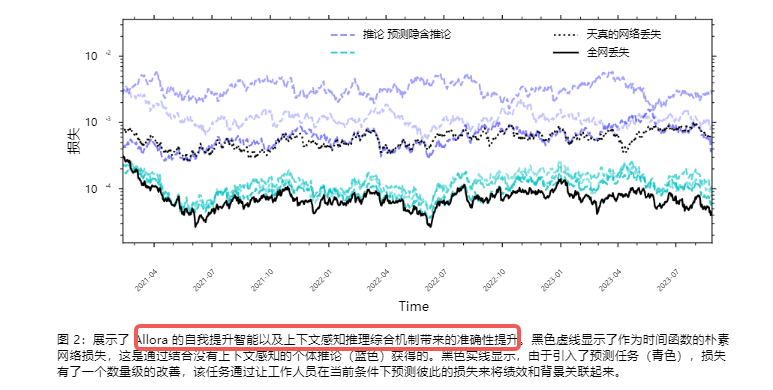
This system ensures that the network can provide the best possible inference results by leveraging the diverse inputs and predictive capabilities of its participants, creating a more robust and accurate decentralized AI network.
Allora introduces a differentiated reward mechanism to ensure that each participant's contributions are fairly recognized:
Worker Rewards: Distributed based on their contributions to inference and forecasting tasks, incentivizing them to provide high-quality data and predictions.
Reputer Rewards: Given based on their proximity to the consensus and their stake, ensuring accuracy and fairness in evaluations.
Overall Reward Distribution: The reward mechanism encourages active participation while avoiding the over-concentration of rewards to any single participant through its decentralized design.
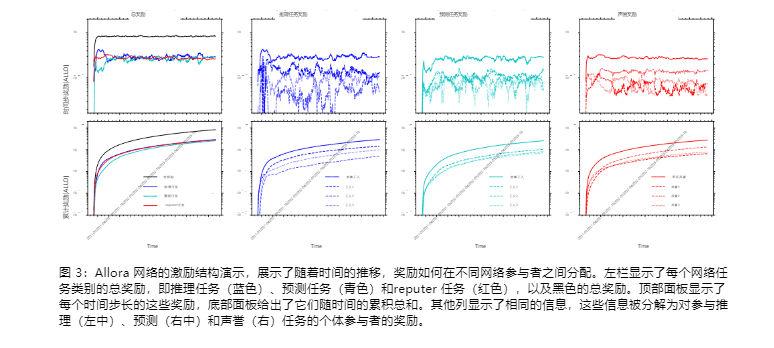
Allora is currently implementing several innovative solutions:
AI Price Prediction: Provides accurate, real-time asset price information crucial for advanced financial operations.
AI-Driven Vaults: Enables developers to implement sophisticated DeFi strategies and enhance yield potential.
AI Risk Modeling: Allows protocols to build more secure systems to mitigate external risks.
AnyML: Facilitates the easy integration of any machine learning model, allowing anyone (not just ML engineers) to use decentralized AI to build more robust products.
The Allora network uses its native token, ALLO, to facilitate value exchange among network participants. Here’s how ALLO is used:
Purchasing Inference Results: Users can buy inference results with ALLO tokens. Allora uses a "Pay What You Want" (PWYW) model, letting users decide how much ALLO to pay for the inference.
Paying Participation Fees: ALLO tokens can cover fees for creating topics or participating in the network as workers, reputers, or validators. These fees are variable.
Staking: Reputers and validators can stake ALLO tokens, and other token holders can delegate their tokens to them. Staked reputers, validators, and their delegators receive ALLO rewards.
Reward Payments: The network pays rewards in ALLO tokens. For workers, rewards are based on their contributions to network accuracy. For reputers and validators, rewards are based on their staking and consensus activities.
Allora's token economy is designed to ensure the token's intrinsic value and stability:
Fee Revenue: All fees collected by the network go into the network treasury to fund rewards. This slows the depletion of the treasury, maintaining a high annual percentage yield (APY).
Token Buyback: The network uses collected fees to pay rewards before minting new tokens. This means ALLO's supply can increase (inflation) or decrease (deflation) based on market dynamics.
Smoothing Issuance Mechanism: By applying an exponential moving average, token issuance is smoothed to avoid sharp drops in APY when major token unlocks occur, ensuring that token holders continue to stake their tokens.
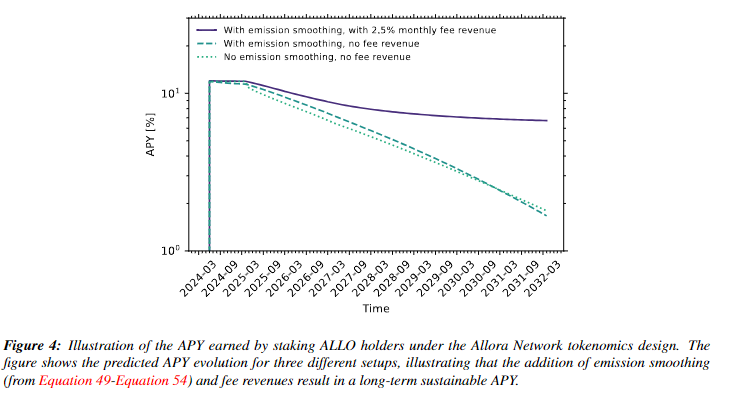
However, the whitepaper doesn't mention the token sale date or details. For more information, it's best to follow their social media channels.
We haven't yet touched on the zkML technology mentioned at the start of this article, making it seem like Allora isn't related to it. However, behind Allora is the established project Upshot, which plays a crucial role in Allora's development.
Upshot enhances Allora's functionality by deploying its flagship price prediction model on the network. This model provides AI-driven price information for over 400 million assets, with a historical accuracy confidence level of 95-99%.
Additionally, the model's outputs can be accessed through zkPredictor, the largest on-chain zkML application to date. This enables applications to use the outputs in a cryptographically verifiable way.
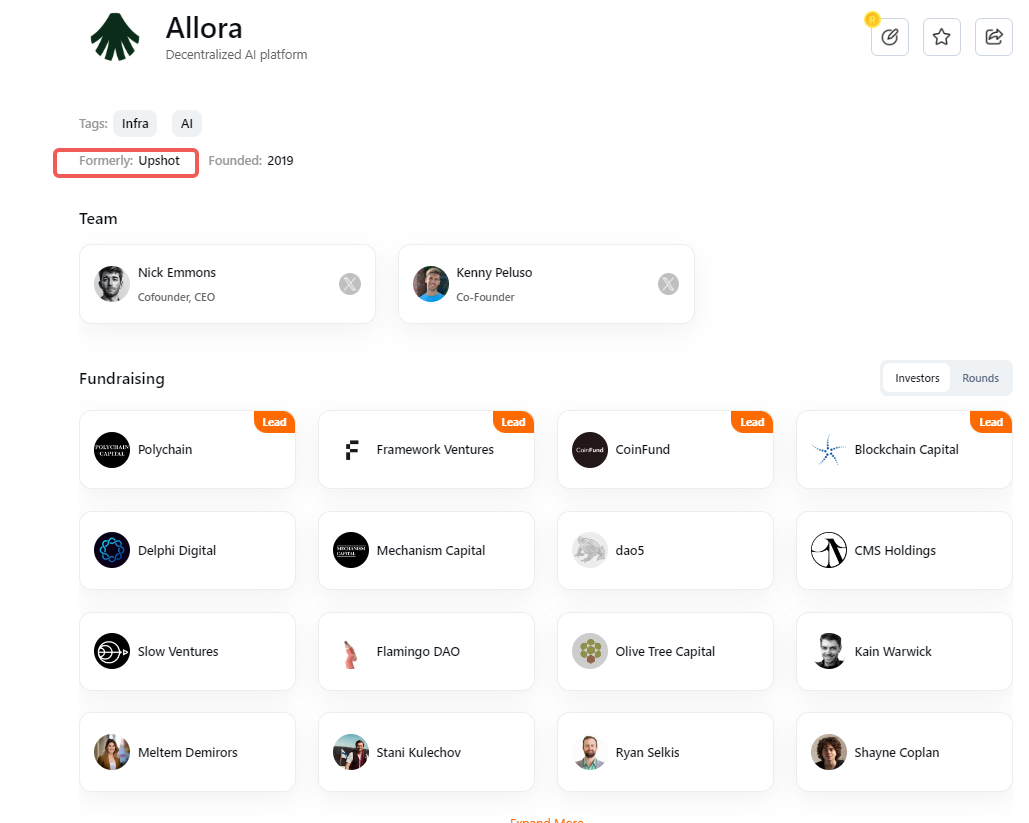
In 2022, Upshot secured $22 million in funding led by Polychain, Framework, CoinFund, and Blockchain Capital. Initially, their focus was on real-time NFT asset valuation. With the rise of AI, the project's direction has shifted, but the technology they developed has now been applied to Allora.
According to Allora's official blog, the project rollout is planned in three phases:
Testnet Phase 1: Mid-February 2024
Testnet Phase 2: Mid-March 2024
Mainnet Launch: Early Q2 2024
While the timeline appears slightly delayed, the project is still on track for its mainnet launch.
To generate buzz and encourage participation, Allora launched its first testnet incentive program on May 17. By engaging in on-chain activities, participants can earn points, increasing their chances of receiving future airdrops.
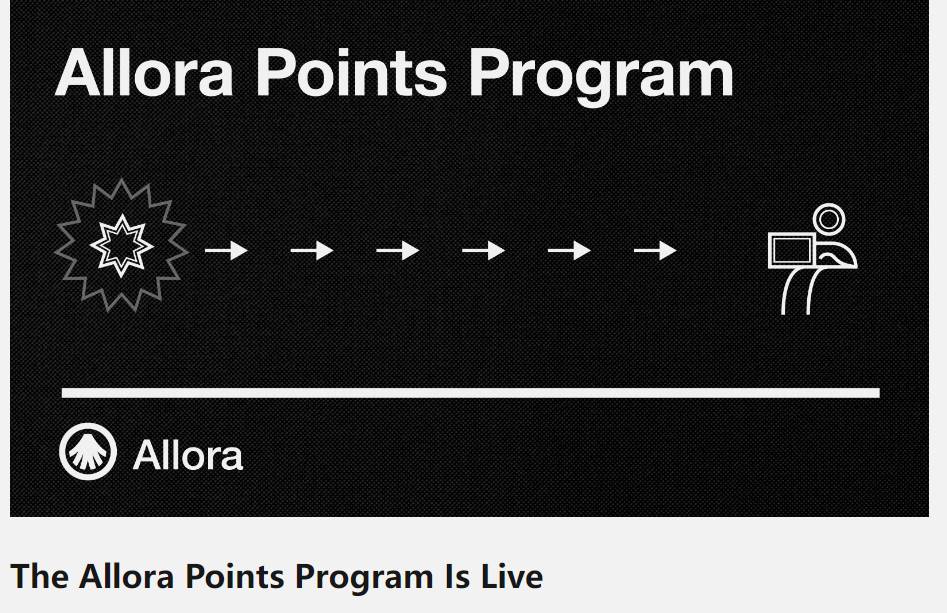
Participants can earn points through various activities, both on-chain and off-chain:
Creating Topics: Identify and define specific problems or areas of interest within the network, encouraging others to develop and provide solutions.
Introducing Machine Learning Models: Add machine learning models to the network for others to use.
Using Allora-Supported Applications: Engage with applications and services that leverage Allora's machine intelligence features.
Community Engagement: Follow Allora on Twitter and join their Discord and Telegram groups.
Participating in Community Events: Take part in selected community activities and events to support the Allora network.
Regular users can easily find all accessible activities on the Galxe event page. Interested participants can click here to get involved.
Overall, Allora is a crypto project with significant technical innovation, strong resources, and the ability to leverage existing technology. By staying aligned with evolving AI trends, Allora maximizes its capabilities to explore new business directions, ensuring it remains competitive in the current attention economy.
How high the project can go depends on two factors: the resurgence of AI trends and the project's future operational strategies.
Recommendation

Unpacking Pi Squared: Academic Leaders from Elite Universities Spearhead a $12 Million Funding for a ZK Universal Settlement Layer
Jul 07, 2024 14:26
CARV
New Rules of Data Value Distribution: How CARV is Powering Millions of Users?
Nov 11, 2024 15:49

Understanding Bittensor (TAO): The Ambitious AI Lego Making Algorithms Modular
Jun 06, 2024 22:02